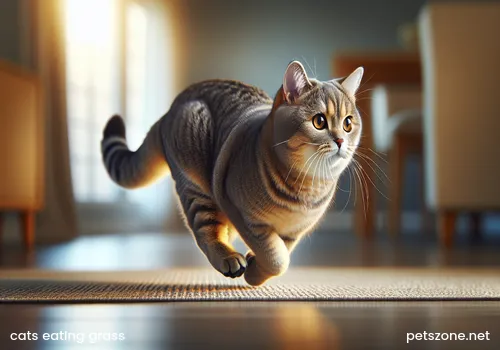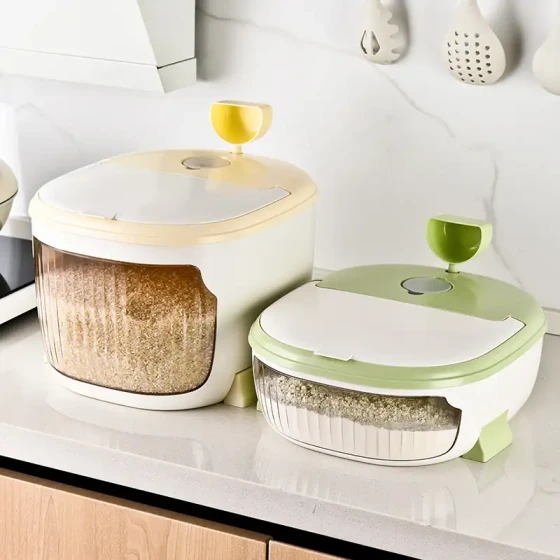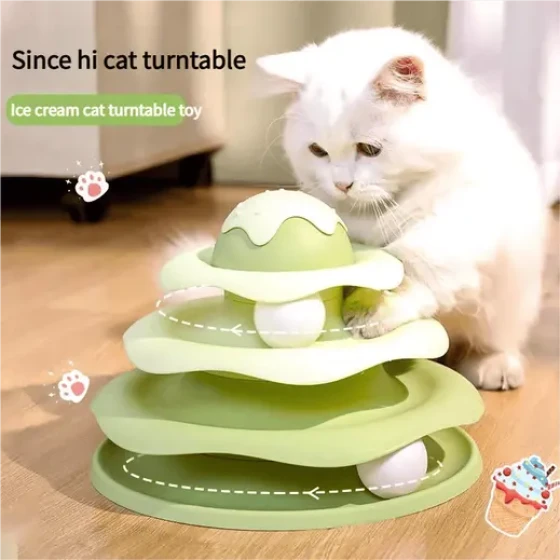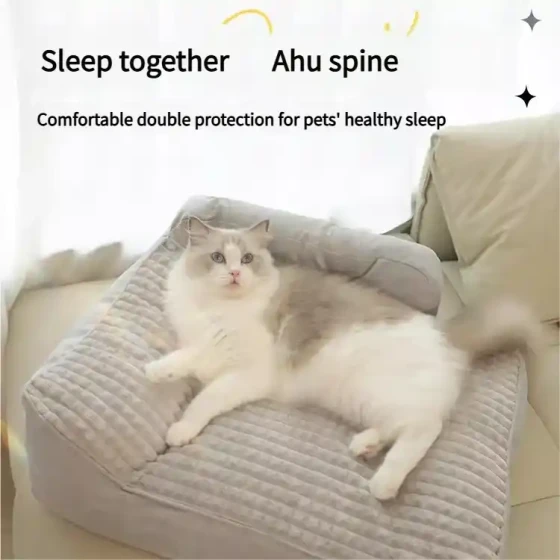What Grass Do Cats Eat to Remove Hairballs_These Natural Plants Help Cats Expel Hairballs
Cats eating grass is a common behavior mainly to help them clean their digestive tract, especially to expel difficult-to-digest hairballs. Choosing safe natural plants for cats to eat can effectively help them better self-care.

As naturally "fastidious" animals, cats spend a lot of time grooming their fur daily. During this process, they inevitably swallow some loose hair. This hair accumulates in the stomach and over time may form hairballs. Although some hairballs can be expelled through the digestive tract, others may remain in the stomach, causing discomfort such as dry cough, vomiting, and loss of appetite. At this time, smart cats will look for certain plants to help solve the problem.
Why do cats eat grass? It’s not just for "trying something new"
Many cat owners might notice their cats occasionally nibbling on houseplants or seeking opportunities to eat grass outdoors. This is not because they are hungry, but due to an instinctive need. Cats eat grass mainly for two reasons:
- Help vomiting: This is the most common effect. The fiber in cat grass can stimulate the cat’s stomach lining, triggering a vomiting reflex to expel accumulated hairballs, undigested food, or other foreign objects. It’s like the cat giving itself a "stomach wash," a form of self-protection.
- Promote digestion and excretion: Some believe the cellulose in cat grass also helps increase intestinal motility, promoting the movement of hairballs and other digestive waste downward to be expelled with feces. While vomiting is more obvious, this promotion of excretion is equally important.
Overall, cats eating grass is a natural behavior to maintain digestive system health.
Which natural plants are cats’ "hairball-removing magic herbs"?
Not all plants are safe for cats, and some are even toxic. The so-called "cat grass" usually refers to young shoots of several grass family plants, which are non-toxic and rich in fiber. The following are some common and safe "hairball-removal grasses" for cats:
- Wheatgrass (Wheatgrass): This is one of the most common and recommended "cat grasses." Wheatgrass is rich in vitamins, minerals, and chlorophyll, beneficial to cat health. Its abundant fiber effectively stimulates the stomach and intestines to help expel hairballs. Growing wheatgrass seeds is very simple and easy to cultivate at home.
- Barley Grass (Barley Grass): Similar to wheatgrass, barley grass is also a seedling of grass family plants, equally rich in nutrients and fiber, a good choice to help cats remove hairballs. Many commercially sold cat grass seed packs contain a mixture of wheat, barley, oat, and other grass seeds.
- Oat Grass (Oat Grass): Oat grass is softer in texture, and some cats may prefer its feel. Its fiber content is also high, which helps cats’ digestion and hairball expulsion.
- Catnip (Catnip): Catnip belongs to the Lamiaceae family and differs from the previous grass family plants. Catnip contains nepetalactone, which makes most cats excited and happy, leading to behaviors like rolling and rubbing. Although catnip also supports digestion by promoting intestinal motility, its primary role is to induce excitement and is less directly helpful for hairball removal compared to grass family cat grass. Many cats enjoy playing with and nibbling catnip, but it is mostly a form of entertainment and stress relief.
Important Tip: Never allow cats to eat roadside or wild grasses because they may be contaminated with pesticides, herbicides, or parasites, posing serious health risks to cats. Also, be sure to know common indoor plants toxic to cats and keep them out of reach.
How to provide safe cat grass for your cat?
Providing cat grass is both convenient and economical, mainly in two ways:
- Grow your own: Purchase specialized cat grass seeds (usually a mix of wheat, barley, oat seeds) from pet stores or online platforms. Prepare a small pot and some soil (or use soilless medium like vermiculite or coconut coir), sow the seeds, keep moist, and place in a well-lit spot. They usually sprout within a few days, and can be fed to cats after one to two weeks. Growing your own ensures freshness and no contamination.
- Buy ready-grown cat grass: Many pet stores or supermarkets sell potted cat grass already grown. When purchasing, check if the grass is green and fresh, the soil is clean, and avoid plants with yellowed leaves or pest infestations.
Either way, once the cat grass reaches 5-10 cm in height, it can be given to the cat. Place the pots where cats can easily reach and allow them to eat freely.
Do cats always vomit after eating grass?
Not necessarily. Whether a cat vomits after eating grass depends on several factors, including the condition of hairballs or other objects in their stomach, the type of cat grass, and individual differences among cats. Some cats may vomit hairballs or food shortly after eating grass, while others may just increase intestinal motility to aid expulsion. Some cats may simply enjoy the texture or flavor of grass.
If a cat frequently vomits after eating grass, or has persistent dry retching without bringing anything up, or shows symptoms like lethargy and loss of appetite, it is more than simple hairball management. It is recommended to promptly take the cat to a veterinarian to rule out other potential health issues.
Common Questions and Answers
- Q: What if my cat doesn’t eat cat grass?
A: Some cats are naturally uninterested in cat grass, which is normal. You can try offering different types of cat grass (e.g., growing both wheatgrass and oat grass) to see if they prefer a certain texture. If the cat really refuses to eat grass, increasing grooming frequency, choosing hairball formula cat food, or using hairball paste are alternative ways to help manage hairballs. - Q: Does cat grass need to be given daily?
A: No. Cats usually decide whether and how much to eat grass based on their needs. You can keep potted cat grass at home for cats to freely access. Generally, eating once every few days or when feeling uncomfortable is common. - Q: Besides grass family cat grass, are there other plants safe for cats?
A: There are some other plants safe for cats, such as catnip and silver vine. However, these plants primarily provide entertainment or emotional relief, rather than serving as a main hairball removal measure. Always confirm the non-toxicity of any plant before offering it to your cat.
Conclusion
Providing safe, healthy cat grass is a natural and effective method to help cats manage hairball problems. Wheatgrass, barley grass, oat grass, and other grass family plants are ideal choices rich in fiber that effectively stimulate cats’ digestive tracts to expel hairballs. Regular grooming and choosing appropriate diets are also key to preventing and managing hairballs. Observe your cat’s reaction after eating grass and consult a veterinarian promptly if abnormalities occur to better care for your feline friend’s health.



